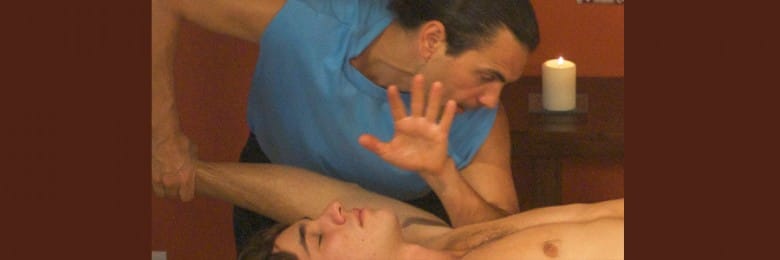
Forearm Massage
Forearm Massage in Lomi Lomi
Lomi Lomi is a nurturing, flowing form of Hawaiian massage. Some styles use the hands, but there are styles that use forearms for nearly every run. Two of those styles are Sacred Lomi® and Temple Style. Many careers have been lengthened and saved by learning proper forearm techniques, which relieves stress on the fingers and thumbs.
There are important mechanics involved in using the forearm properly so that you take care of your body and take care of your client. The first principle is to use your inner forearm. The inner forearm, referred to as ‘the tool’, is the soft fleshy part of the forearm right next to your elbow. In order to properly use this part of your arm, you need to learn to rotate your hand counter-clockwise so that your palm is open and facing the client’s body. This insures that the ulna (outer forearm bone) is not the point of connection and the inner soft tissue is.
care of your client. The first principle is to use your inner forearm. The inner forearm, referred to as ‘the tool’, is the soft fleshy part of the forearm right next to your elbow. In order to properly use this part of your arm, you need to learn to rotate your hand counter-clockwise so that your palm is open and facing the client’s body. This insures that the ulna (outer forearm bone) is not the point of connection and the inner soft tissue is.
Another important point is to keep your arm at a ninety-degree angle, bent at the elbow. This allows you to keep your shoulder over your tool and to use gravity and your bodyweight to apply pressure. By leaning in, instead of pushing, you can completely relax your working arms, wrists, hands, shoulders and even your back. Gravity, proper alignment and your bodyweight do all the work. Like in most physical disciplines from dance to yoga to tai chi, keeping that alignment is what will take care of your joints and your body.
It’s also important that you don’t tense or clench your back, ¬shoulders, forearms, wrists, hands or jaw. When you tense, the tool will be hard and unforgiving and you will tire yourself unnecessarily. Often people will clench their fists or create a claw shape with their hands while they’re working which hardens the tool and creates tension for you and the client. Tensing may also cause you to hold your breath or not breath evenly and deeply. When you stop supporting your body with oxygen, it also causes fatigue.
Learning to navigate around the bones and work only on the soft tissue is also important. This helps you avoid hitting protrusions like the scapula, ribs and pelvic bone. Using your forearms effectively and not allowing your elbow to hit the body requires practice. Elbows can be good for deep point-work, but usually not while you are flowing on the body.
To become a skilled practitioner with forearm runs, we highly recommend learning from a qualified teacher orhome study course. Practice these simple techniques on a willing friend who will be forgiving as you learn to navigate the soft tissue, breathe, relax fully and find a graceful flow. As you practice with your tool or forearm, it will become more and more sensitive, like your palms and hands, so that you know and sense how to offer the appropriate pressure and touch in each moment.
Holding a safe and sacred space for your client is paramount in all healing work. So whether you’re working with your hands or your forearms, we encourage you to always stay present, listen deeply, breathe and hold that space of aloha for your client and for yourself.

